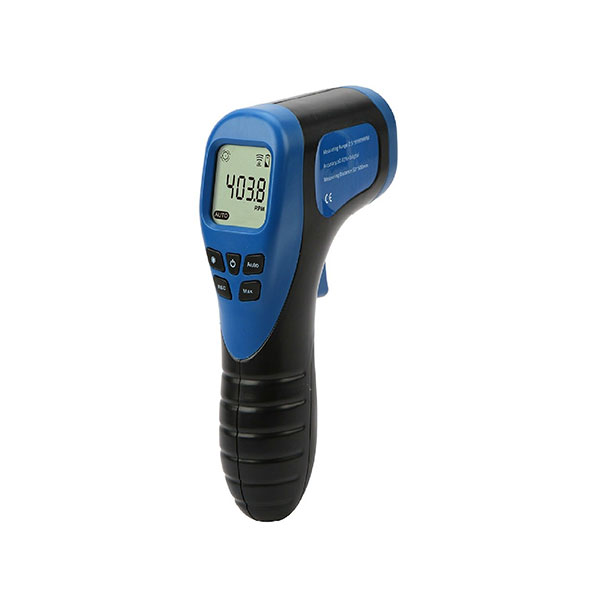Exactly How a Tachometer Helps Display Engine Health And Wellness and Efficiency
Exactly How a Tachometer Helps Display Engine Health And Wellness and Efficiency
Blog Article
The Relevance of a Tachometer in Monitoring Engine Rate and Efficiency in Automotive Applications
In the realm of vehicle design, the tachometer stands as an essential instrument in the chauffeur's collection, providing a straight window right into the inner workings of a lorry's engine. Past its feature as a mere scale of revolutions per minute (RPM), the tachometer offers as a crucial tool for enthusiasts and specialists alike, using real-time insights right into engine efficiency and health and wellness.
Value of Keeping Track Of Engine RPM
Keeping an eye on engine RPM, or revolutions per min, is a crucial aspect of automotive maintenance and performance examination. Engine RPM directly associates with the speed at which the engine's crankshaft turns, indicating how rapidly the engine is running.
In addition, keeping an eye on engine RPM is essential for performance evaluation in racing and high-performance automobiles. In recap, monitoring engine RPM is not only important for discovering issues however likewise for optimizing engine efficiency in different vehicle applications.

Benefits of Real-Time Information
In automobile applications, real-time data plays an important duty in providing immediate understandings into the efficiency and condition of the vehicle. By continuously keeping an eye on numerous specifications such as engine rate, temperature, fuel intake, and extra, real-time data provides numerous advantages that add to improved performance and safety and security when traveling.
Furthermore, real-time data helps with performance optimization by supplying immediate responses on driving behaviors and engine effectiveness. Drivers can change their behavior in real-time based on this information to accomplish much better gas economic situation and extend the life-span of their car.

Furthermore, real-time information plays an essential role in contemporary auto diagnostics, enabling specialists to promptly diagnose and deal with malfunctions. This leads to minimized downtime, lower upkeep costs, and ultimately, improved total vehicle reliability and longevity (tachometer). By taking advantage of the power of real-time data, auto stakeholders can make educated choices that positively impact both the efficiency and longevity of the lorry
Influence On Equipment Shifts
The tachometer plays an important function in optimizing equipment shifts by supplying real-time engine rate information to the driver. When coming close to the redline on the tachometer, it indicates the driver to this website upshift to prevent over-revving the engine and triggering prospective damages.
Furthermore, the tachometer aids in accomplishing smoother equipment changes, specifically in manual transmissions. By checking engine rate, drivers can perform gear changes at the optimum RPM variety, reducing snagging movements and minimizing wear on the transmission elements. This accuracy on duty adjustments not just enhances driving convenience but likewise adds to sustain effectiveness.
Enhancing Fuel Efficiency
Given the vital role the tachometer plays in optimizing equipment changes for performance and engine health, it directly contributes to taking full advantage of fuel performance in automobile applications. By giving real-time responses on engine rate, the tachometer assists vehicle drivers in maintaining the most effective RPM range for gas economic situation. When chauffeurs constantly check the tachometer and adjust their driving behaviors appropriately, they can avoid unnecessary gas usage triggered by over-revving or lugging the engine.
Moreover, the tachometer assists motorists identify one of the most fuel-efficient equipment to be in at any kind of given moment, protecting against the engine from working their explanation more challenging than required. This is specifically critical during velocity and travelling, where remaining in the ideal gear can considerably affect fuel performance. Additionally, the tachometer can signal motorists to prospective mechanical concerns that might be adversely affecting gas economic climate, such as a sliding clutch or a clogged air filter. In final thought, the tachometer functions as a beneficial tool in boosting gas effectiveness by advertising optimum driving practices and determining areas for renovation in the vehicle's performance.

Optimizing Engine Longevity
The tachometer's function in keeping track of engine speed and performance is important in guaranteeing the longevity of auto engines. Keeping an eye on the tachometer allows chauffeurs to stay within the recommended RPM array for their lorry, protecting against unneeded pressure on the engine and extending its life expectancy.

Final Thought
Finally, the tachometer plays a critical role in keeping track of engine speed and performance in vehicle applications. By supplying real-time information on RPM, it permits efficient gear changes, enhanced gas efficiency, and taken full advantage of engine durability. This tool is crucial for preserving optimum engine efficiency and guaranteeing the overall link performance of an automobile.
Report this page